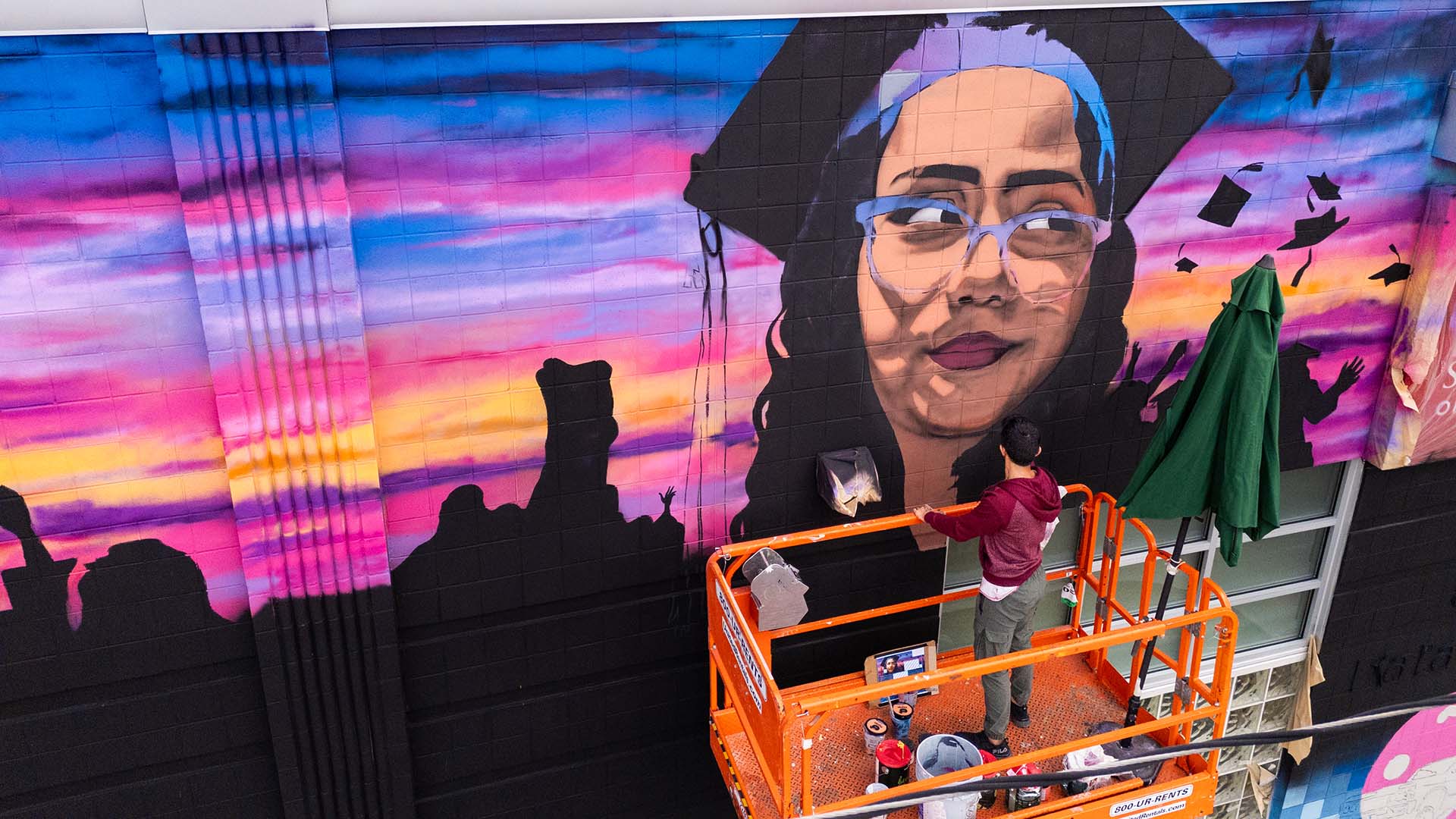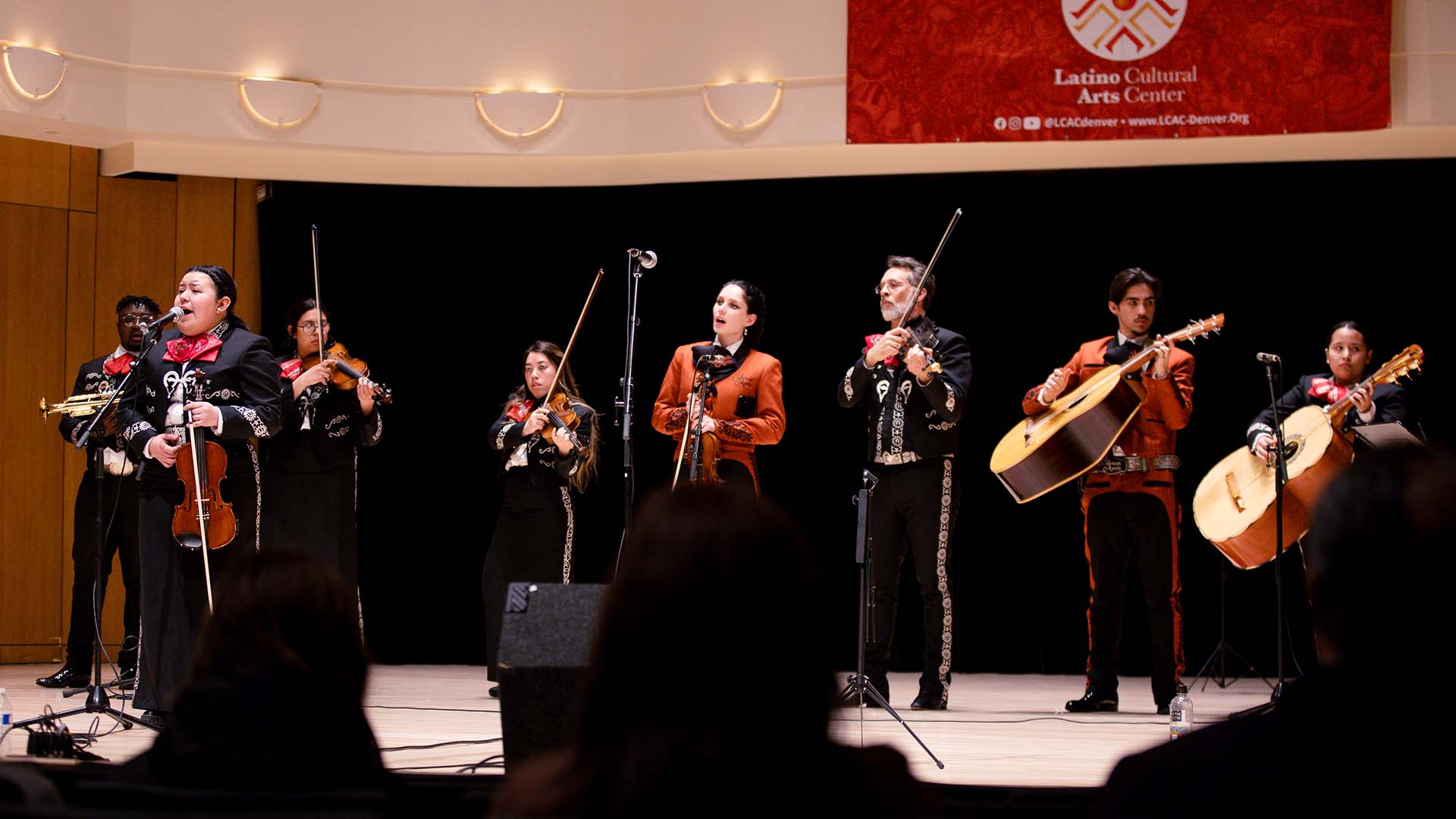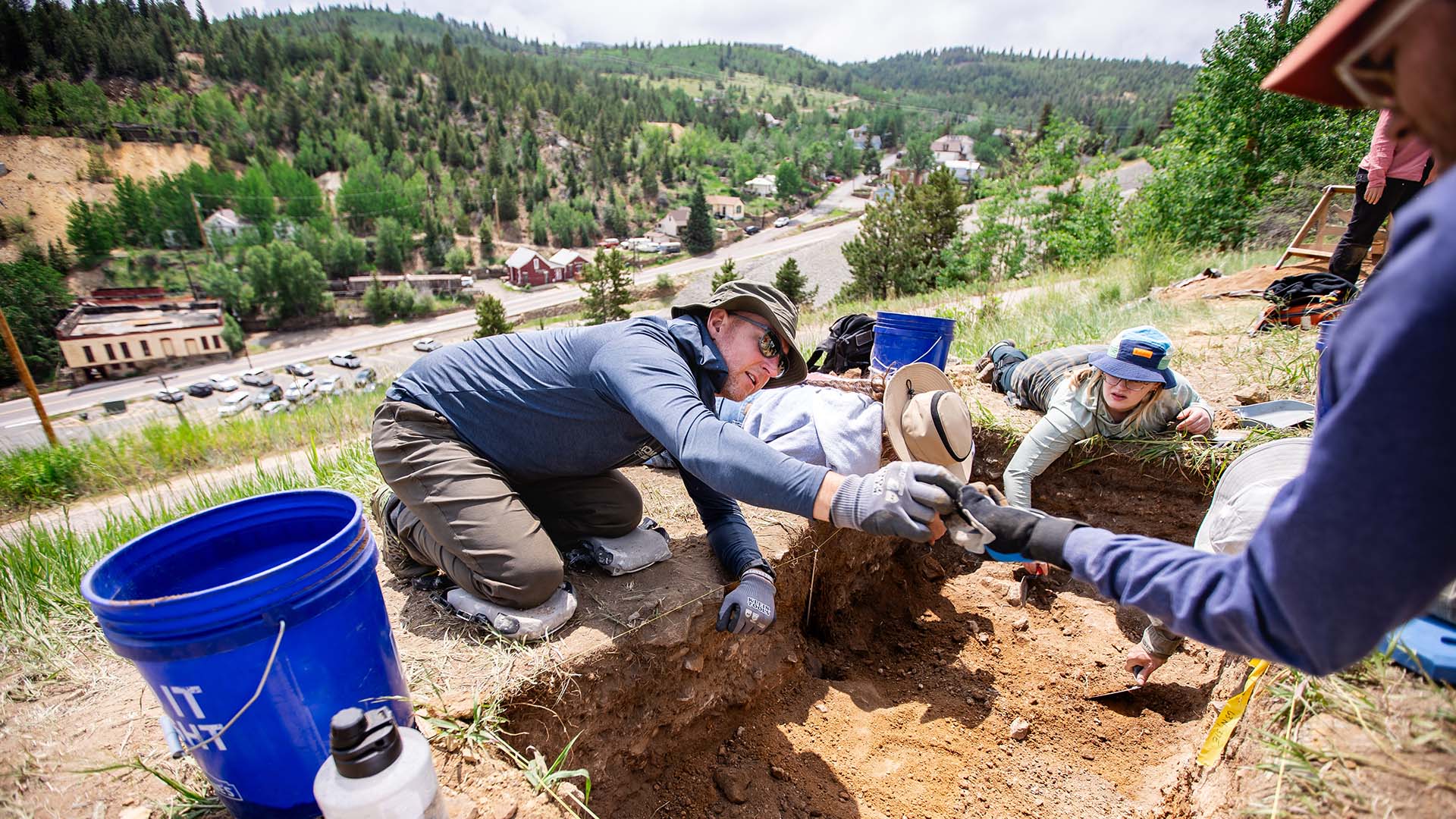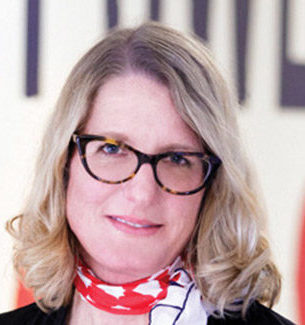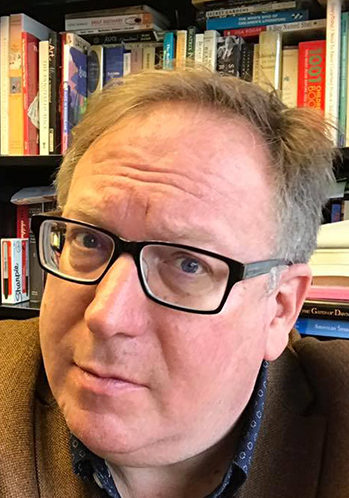Playing with the magic of color
40 years of painting the Denver community has taken Carlos Frésquez around the globe – and he’s just getting started.
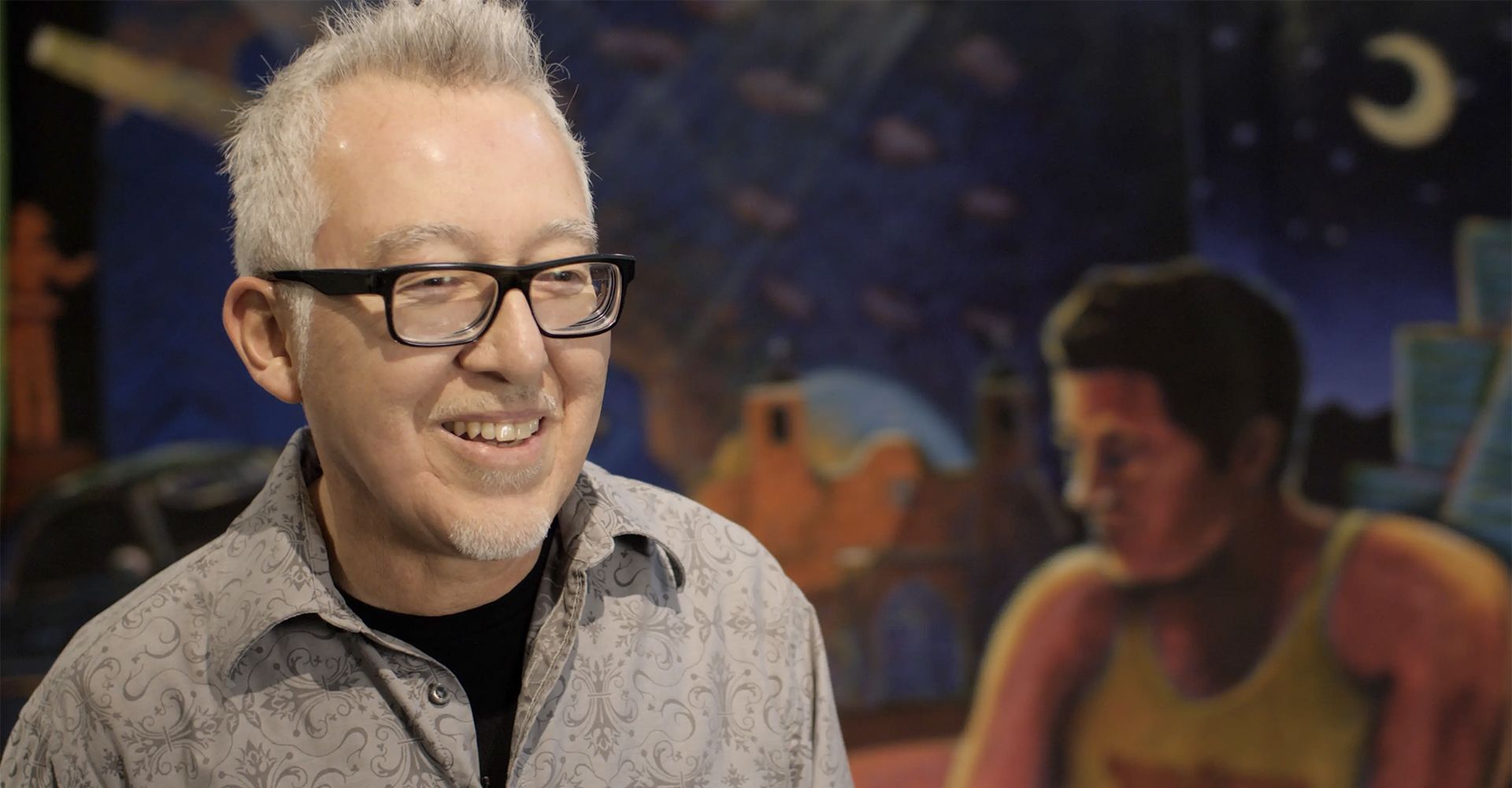
Step outside of the Center for Visual Art (CVA) on Santa Fe Drive and you’ll see several student-designed panels along the fence; head two blocks south and you’ll run into the Su Teatro Cultural and Performing Arts Center, adorned with multicolored murals paying homage to Chicano activism and indigenous history of the surrounding community.
This public art is the output of the popular MSU Denver class Community Painting: The Mural, led by Carlos Frésquez, associate professor of art and Denver creative luminary.
“A mural is a wall with a tongue,” he said. “It can really speak to you; it can make you say ‘Wow, what an impact!’
“That’s what art should do – it should give you something.”
Selections from his storied career are currently on display at the CVA as part of “Sangre Colorado: Carlos Frésquez Mid-Career Survey,” running through March 24.
Including several murals, the exhibition showcases a road the longtime MSU Denver alumnus-turned-faculty member has run for more four decades. The pieces cut a vibrant path across movements and media, honoring art as a narrative vehicle.
And, at the very heart of his creative process, is an unwavering commitment to authentic voice.
“Each mark you make carries a part of you, so you have to create from a place within,” said Frésquez. “If you don’t have that truth, what do you have?”
He traced his own love of expression back to a kindergarten experience in Denver Public Schools. Sitting at the newsprint-adorned tables and dribbling paint from little juice cans onto white sheets, he created splotches of primary colors.
The defining moment, however, was when his teacher asked the class to lift their construction paper canvases. Yellow and blue mixed into something new altogether – green.
“When I saw the colors swirling together, I thought, ‘This is magic!’” said Frésquez
“That was the point I knew what I wanted to do. And here I am, 56 years later, still playing with the magic of color.”

That discovery carried something else important, too: power.
During the Chicano movement of the 1960s, a 13 year-old Frésquez took part in walkouts to protest racist and discriminatory conditions throughout Colorado. He recalled hearing Rodolfo ‘Corky’ Gonzalez speak on the strength of Chicano culture.
“He described how we come from a proud people and that it’s important to know who you are,” said Frésquez. “That stuck; I’ve carried it with me ever since.”
This inspired him to delve into his own familial research – and an unearth an influential find in the process. While poring over a book on New Mexican art, he turned the page to discover a piece from Pedro Antonio Fresquís, a santero – or “saint maker” who also painted and was part of his family lineage traced back to two brothers living in New Mexico in the early 1600s.
The product of what’s believed to be the first native-born santero in New Mexico, a tableau is on display at the CVA on loan from the Colorado Springs Fine Art Center. It carries a common element found in pieces from the latter-day Frésquez as well: a central isolated figure, flanked by curtains, with the entire scene resembling a stage.
That performance-like framing lends itself naturally to yet another medium of his expertise – set design.

For Anthony Garcia, executive artistic director of Su Teatro and affiliate faculty of Chicana/o studies at MSU Denver who has worked with Frésquez since the mid-1980s, collaboration, from on-stage productions to the student-created external murals, preserves and empowers the stories of community.
“Carlos represents the legacy of Chicano art; he’s wrapped the whole surrounding area in his work and is a hugely influential part of the muralist movement,” said Garcia. “His ability to jump genres using images and iconography – from historical to contemporary – is incredible.”
When it comes to accomplishments, however, Frésquez downplayed the personal.
“As a teacher and alum, I’m just so proud of MSU Denver; it’s really transformed my life,” he said. “Looking around to see a piece from the ‘80s next to something from 2016, it’s hard to believe.
“Here I am, a Chicano kid out of Denver; I’m just fortunate to help capture some of these shared experiences and give back to the community.”

Frésquez would know about that. His contributions are part of a collective narrative, stretching from those murals here in Denver throughout the Southwest and onward, further, to prestigious galleries on the other side of the planet, their messages often manifesting in unexpected and provocative ways.
“A lot of times we think of artists in terms of labels – abstract, representational, modernist or pop-art,” said Cecily Cullen, managing director and curator of the CVA.
“He transcends that into a larger contemporary conversation, though. His work is important not only locally, but nationally and internationally; we’re so lucky to have him here and wanted to celebrate that.”
The exhibit showcases a body of work that’s extended all the way into the Smithsonian American Art Museum. But it’s his mastery in the classroom that combines a prolific urgency to create with the selfless advocacy to help others harness their own power of expression.
For Robert Flood, 2001 art graduate, the lessons from Frésquez’s tutelage continue to help frame his work, now as exhibition designer at the High Desert Museum in Bend, Oregon. He contributed work to “Extra Credit,” an invitational exhibition of work by more than 40 of Frésquez’s former students running in parallel to the main gallery.
“He was a really great instructor, very positive and uplifting,” said Flood. “He pushed me to think about the stories that each piece told. That’s really stuck with me over the years.”
And though that sentiment is repeated in – and amplified tenfold by – the thousands of personal narratives he’s enabled over the years, it’s Frésquez who continues to draw inspiration from that magic found in the everyday.
“The students are the ones who teach me so much,” he said. “They give me ways to solve problems; each class, I gain something from.
“I’m really a product of them.”

We – the campus, city and well beyond – are undeniably the beneficiaries of this. But when asked if there’s a favored piece that stands out among those on display at the CVA, Frésquez shook his head.
That’s because his sights are set clearly down the road to tomorrow – and the work that starts today.
“It’s all about the process of making something; about documenting a moment in history,” said Frésquez. “I have to keep painting, whether that’s with tar, lipstick, shoe polish or anything else.
“I don’t have a favorite because there’s still so much more to come.”
“Sangre Colorado: Carlos Frésquez Mid-Career Survey” runs through March 24. CVA will host an artist’s talk on March 7 at 5:30 p.m. and closing reception with poetry reading and ceremonial repainting on March 24 from 4-6 p.m.

